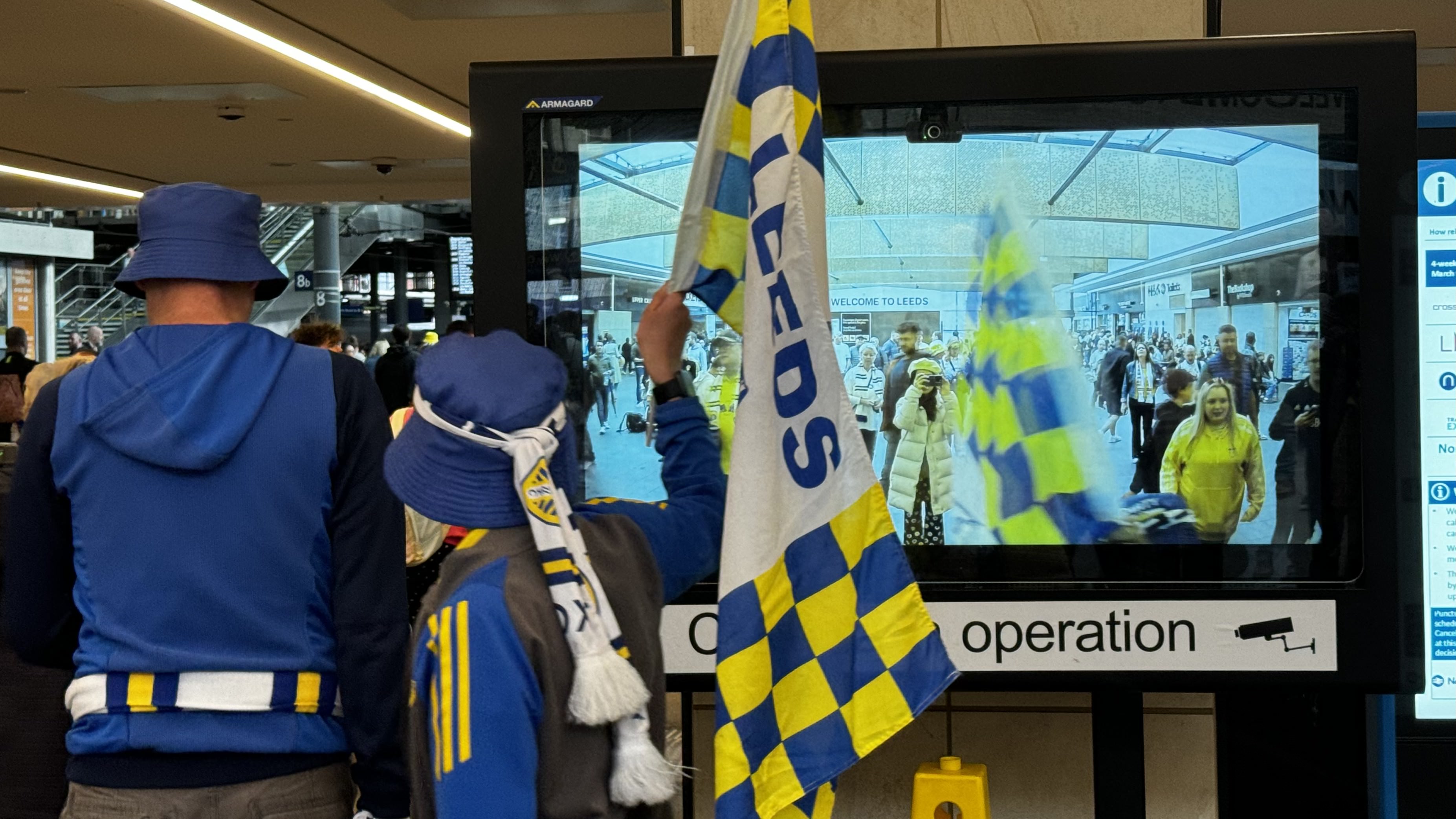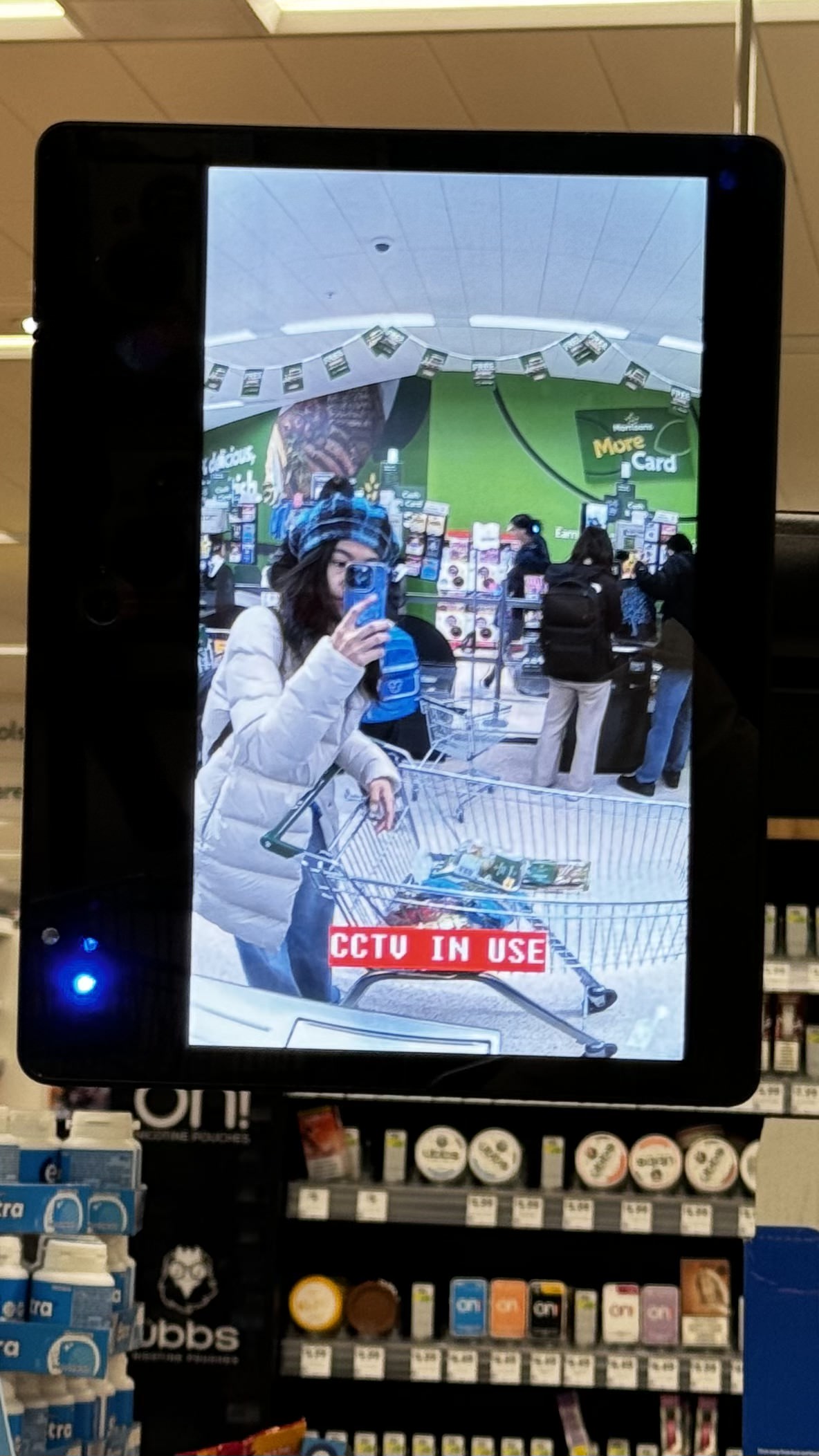![[background image] image of art exhibition space (for an art gallery)](https://cdn.prod.website-files.com/687fbf890c4dd91f7a81c732/687fc9cf156c1b385712e04e_IMG_8561.jpg)

Surveillance quietly shapes how we move and appear in everyday life, often without us noticing. Found Watching reflects on how this gaze influences selfhood. Through fleeting CCTV monitors, the artist Chen-Yen Hung captures self-portraits not composed but found. The project explores how being seen shapes identity—visible, yet no longer passive.

At Leeds Station, two large overhead monitors observe constant flows of commuters. I appear as the still figure in motion-heavy scenes—an inversion of the usual gaze. The screens reveal a quiet theatre : glances, departures, reunions, and moments of human unpredictability.

CCTV shares space with marketing language and shelf signage in these brightly lit aisles. The images reflect the blur of consumption and movement, where my ghost-like presence disrupts the seamlessness of routine space.

These are some of the most intimate images—close-ups framed by transaction screens, discount codes, and safety warnings. The self becomes an involuntary performer, framed by the logic of payment and control. The image loops: I watch myself watching the act of being watched.
Chen-Yen Hung is a Taiwanese filmmaker, scriptwriter, and visual artist based in Leeds. Currently studying MA Film, Photography and Media at the University of Leeds, her interdisciplinary work spans stop-motion animation, documentary, television, and multimedia storytelling. Her creative and academic research explores visibility, surveillance, and identity, drawing on feminist and phenomenological theory to investigate how marginalised voices reclaim authorship through image-making and collaborative media.
As an outsider arriving in Leeds for the first time, I felt adrift in unfamiliar scale and rhythms. The city—so much larger and faster than what I was used to in Taiwan—seemed to move around me, while I became increasingly invisible within it. I felt like a ghost, wandering through streets, train stations, and supermarkets, unsure where I existed in everyday life.
That changed one day during a supermarket evacuation, prompted by a suspected explosive. Amid the confusion, I saw myself on a CCTV monitor. I instinctively took a photo. It felt like the only trace of my presence at that moment—a machine-registered reflection. After that, I began to seek myself out similarly: not through mirrors or selfies, but by finding my image on surveillance screens in public spaces.
This process evolved from instinct to intention. I began actively noticing where cameras were positioned—in shops, above corridors, by train platforms. Sometimes I’d smile at a familiar monitor, like greeting an old friend. I began to photograph myself, quietly and quickly, as I appeared in these screens—often still, sometimes framed against crowds of moving people. I understood this practice as self-portraiture, shaped by being seen.
I’ve rarely been someone who stares at myself in mirrors or takes selfies. But coming to Leeds forced me to see myself differently. I wanted to observe the version of myself who lives here now—how she moves, how she waits, how the systems around her see her.
Using a mobile phone for spontaneity and discretion, I worked with existing CCTV monitors as both subject and frame. These were not staged moments; they were found. Yet each became a layered encounter—with myself, with strangers, and with the gaze of machines. This layered seeing echoed John Berger’s (1972) idea that “women watch themselves being looked at,” and extended it to machine vision. It also resonated withSartre’s (1943) theory of “The Look”—that sharp existential awareness when we realise we’ve become an object in someone else’s perception. Surveillance made this experience literal.
The work also speaks to Michel Foucault’s(1977) concept of panopticism—how visibility disciplines—and to Simone Browne’s(2015) critical framing of surveillance as a structure shaped by histories of racialised and gendered control. In this project, I use those structures not to resist visibility, but to complicate it. What happens when the watcher becomes the watched?
Thank you to the partners who made this student-led exhibition possible.

School of Communication and Media |
MA Film, Photography and Media
School of Fine Art, History of Art and Cultural Studies |
MA Art Gallery and Museum Studies

Laidlaw Library

Curator: Poe Liu @CirCurate